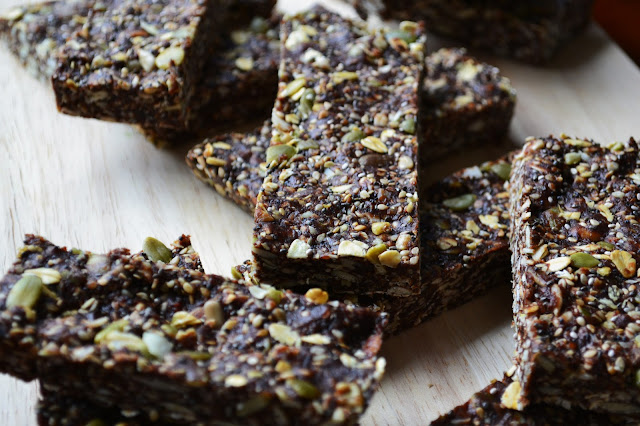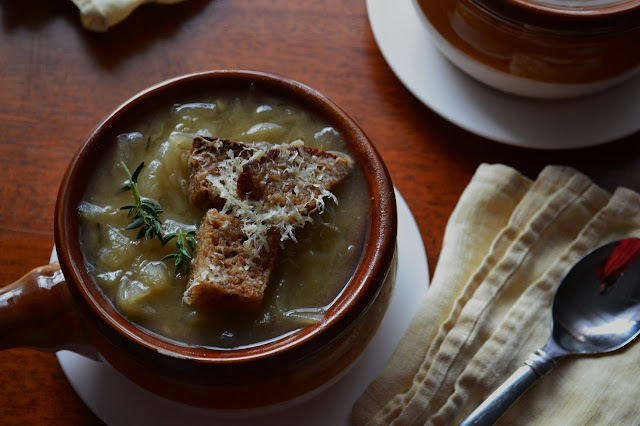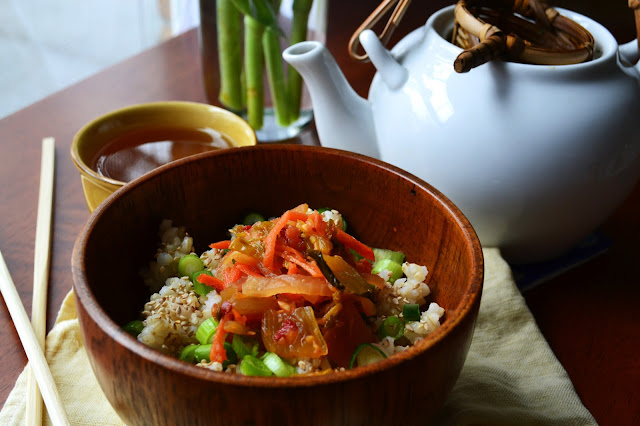
I have a treat for you today, dear readers. These raw superfood energy bars are sure to make your body sing with happiness. They are packed with some pretty darn healthy ingredients and I'm here to highlight some of those right now. Ready for it?
Sesame Seeds- Sesame seeds are one of the highest plant-based sources of calcium and iron. They contain both essential and non-essential amino acids.
Chia Seeds- Chia seeds were once used by Aztec warriors as an energy booster and are an incredible source of plant-based omega 3 fatty acids and protein. The are also a great source of soluble fiber, which makes them promote a clean digestive tract and regular bowel movements. Awesome!
Bee Pollen- A true superfood, bee pollen contains all of the essential components of life and is a complete protein. It is considered an energy and nutritive tonic in Chinese medicine. Cultures throughout the world use it in a number of applications, including extending longevity, improving endurance and vitality, aiding recovery from chronic illness, and antibiotic treatments.
Unrefined Coconut Oil- Unrefined raw coconut oil is one of the best fats you can consume. It's a saturated fat that is so nourishing to every cell in your body and even has powerful anti-bacterial, anti-viral, and anti-fungal properties.
Medjool Dates- These delicious fruits are beyond perfect in every way. They're an incredible source of potassium and are loaded with dietary fiber. Dates are natural energy boosters and they can be used in many treats to replace refined sugar. Might I add that they taste like caramel. I love dates!
 Isn't it amazing that food can be so powerful and healing? It's like medicine with superpowers! Next time I make these, I'm going to add even more superfoods to the mix...maybe some goji berries, hemp seeds, and maca powder to make these bars out of this world.
Isn't it amazing that food can be so powerful and healing? It's like medicine with superpowers! Next time I make these, I'm going to add even more superfoods to the mix...maybe some goji berries, hemp seeds, and maca powder to make these bars out of this world.
Makes around 16 bars
Dry ingredients
1 cup pumpkin seeds
1 cup dried shredded coconut
1/2 cup sesame seeds
1/2 cup sunflower seeds
4 tbs chia seeds
2 tbsp bee pollen (optional)
Wet ingredients
20 fresh medjool dates, pitted
6 tbsp coconut oil, room temperature
4 tbsp raw cacao powder
1 whole vanilla bean, cut into pieces (including the pod) or 1 teaspoon vanilla extract
Add after blending
6 tbsp rolled oats
2 tbsp poppy seeds
1. In a food processor or high speed blender, pulse the dry ingredients quickly. Do not over-process, you want it a little crunchy. Place the mixture in a bowl and set aside. Add half of the dates and the rest of the wet ingredients to the food processor. Run the processor for 30 seconds, then add the rest of the dates one at a time while the machine is running until the mixture is smooth. You might have to help out by stirring around a few times with a fork or add a dash of water.
2. Pour the wet ingredients over the dry ingredients, add oats and poppy seeds and stir until well combined (I used my hands to really get the mixture well combined!). Press the mixture evenly into a 11 x 7-inch baking dish, make sure it becomes quite compact. Place in the fridge for about 30 minutes. Cut into bars. Wrap them in paper and store in an air-tight container. Will keep around a week in the fridge.
For more fabulous food and photos from Nourish The Roots,






















